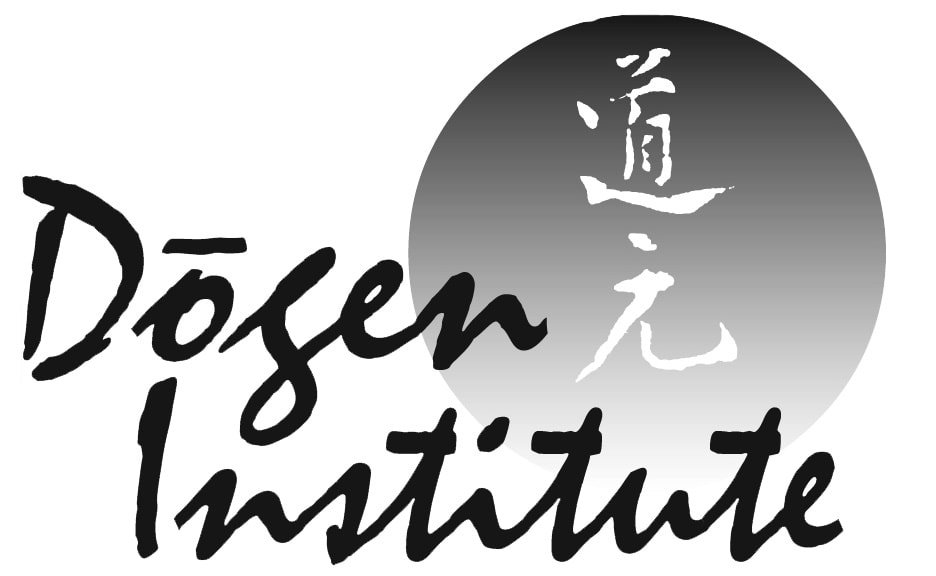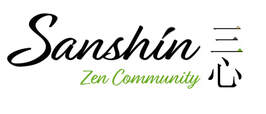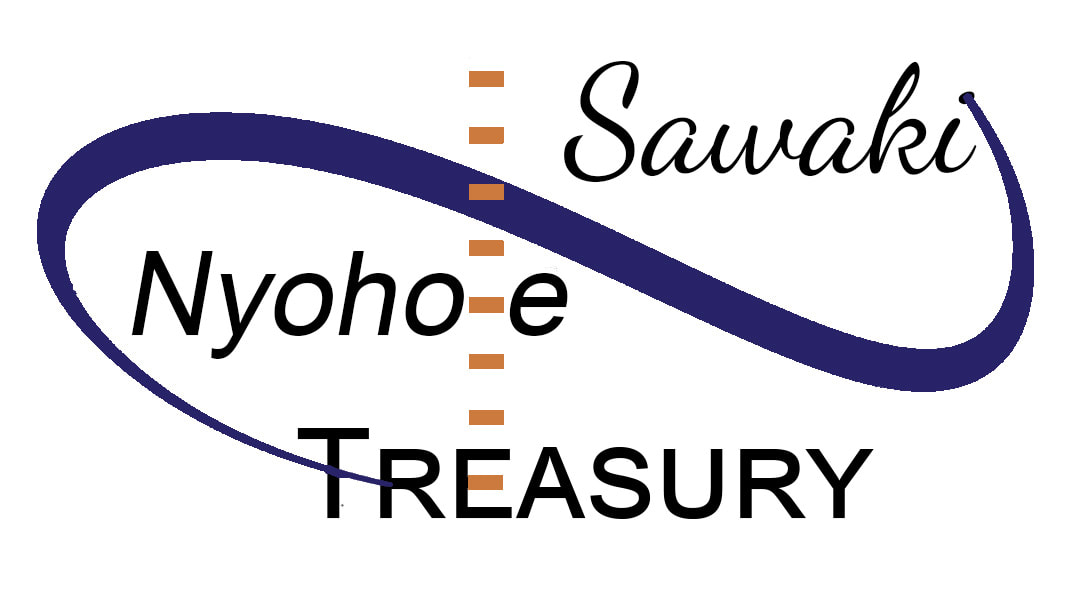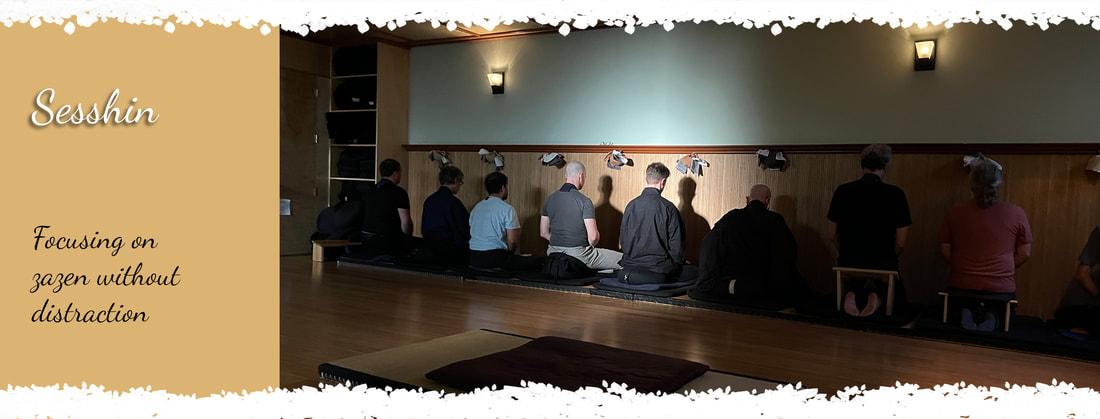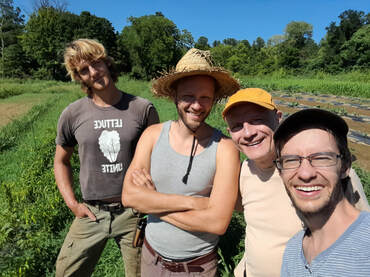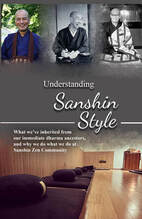|
Before attending sesshin at Sanshin, please download and read our free booklet, Understanding Sanshin Style, paying particular attention to the section on sesshin practice.
|
|
Sesshin at Sanshin is an opportunity to practice zazen without distraction. It's one of the core activities for us in this dharma family, and we pay a lot of attention to it. We set aside the usual activities -- or entertainments -- of temple life, like work periods, meetings with teachers and dharma talks, and focus completely on zazen. We practice in complete silence following a 4 am to 9 pm daily schedule that consists simply of fourteen 50-minute periods of zazen with one-hour periods for oryoki meals and a bit of personal time. This sesshin-without-toys style of practice was created by our founder's teacher, Kosho Uchiyama Roshi, and practiced at Antaiji in Kyoto, Japan. We carry on and offer this tradition of our lineage here at Sanshin.
Sanshin style sesshin is likely to be different from the retreats you may have done in other dharma centers, both in activities and approach. Because it's important to have some understanding of the sesshin practice into which you're stepping, we recommend you have some prior experience of intensive practice, and that you read several things before joiing us:
Food practice during sesshin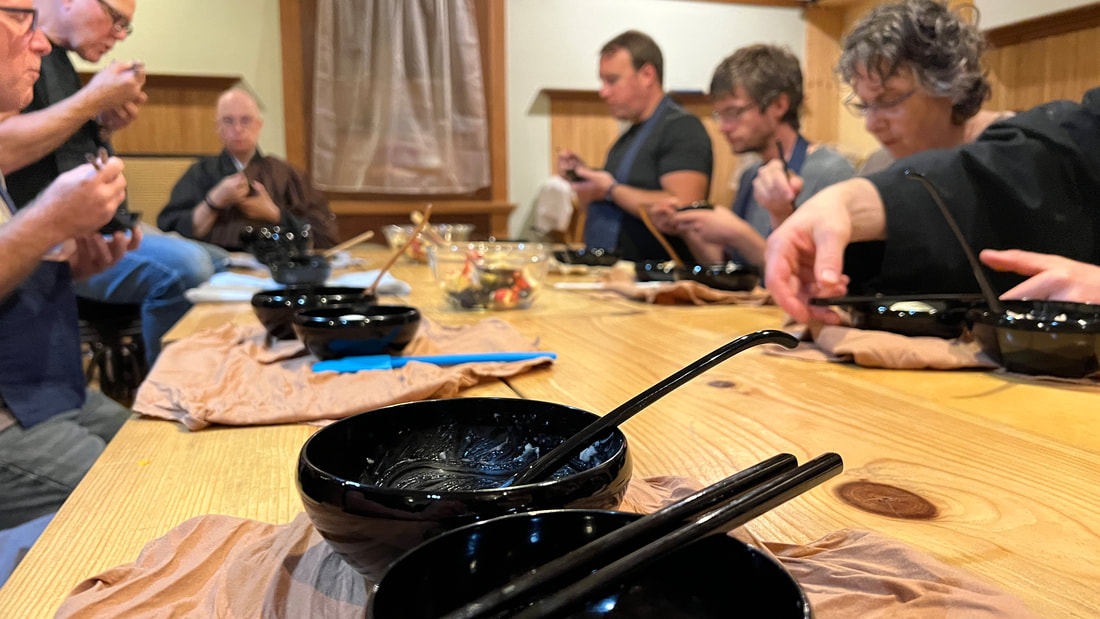
Oryoki meals: During sesshin at Sanshin, we carry out meals in the zendo using oryoki. We sit at low tables and follow the procedures used at Antaiji. This video introduces the steps of the meal (though some details have changed since it was recorded), and this one shows the use of the oryoki set for breakfast. There are various other oryoki-related resources available online, which you can find and study on your own.
After the welcome meeting on the opening afternoon of sesshin, we take some time to (re)orient ourselves to oryoki practice at Sanshin, moving through the steps of formal meals together, with opportunities for discussing details and refinements before the complete silence of sesshin. If you have your own oryoki set you're welcome to bring it, but we have plenty of (lay) sets for use by participants during the sesshin. How we source food for sesshin at Sanshin
We are participating in the local food & farming community.
During sesshin at Sanshin, we simply sit, sleep, and eat. Quietly living out this schedule together for three, five, or seven days at a time, we embody in a very concentrated way a central question in our practice: how do we live without causing each other suffering? Relating to the local community and environment through the basic necessity for food has been a given in sanghas across the world through most of Buddhist history. In our modern context of supermarkets, large-scale industrialized agriculture, and widespread environmental degradation, it takes some intention to participate in this long tradition, and to do our best to avoid some of the harms to nonhuman and human beings inherent in much of our contemporary global food system. Cooking and eating can be a deep study of community. This becomes especially apparent when these are our only waking activities besides sitting, as during sesshin. Because of our cooking practice in the kitchen, we can eat and continue to sit in the zendo; because of our sitting and eating practice in the zendo, we can cook in the kitchen. In this context, we can’t help but notice that in order to live, we all need, as Rev. Tatsuzen Sato writes for Sotoshu, “to put other forms of life such as those of animals and plants into our mouth.” Less obvious is that underpinning this dynamic is the interaction of countless beings in the growth, harvest, and transport of living food. The practice of food, like zazen, teaches and embodies interconnection. Eating fresh vegetables grown in nearby soil can be a simple and direct reminder for us. Recognizing the opportunity, particularly in sesshin practice, for wholesome participation in the life of all beings, we aim to purchase a substantial portion of food for our practice activities from nearby small farms, gardens, and people that work to produce and provide food sustainably -- and to grow what we can as a sangha ourselves. Coordination efforts in this direction are built into the job description of Sanshin’s operations manager. More sesshin context & helpful informationsesshin logistics
Sesshin logistics:
Your role in sesshin
One of the things we hear from sesshin participants most frequently is that their practice here is only made possible by the efforts and contributions of the entire group. Your presence is important to everyone, and we plan on your attendance at all sesshin activities. If you aren’t around to carry out your work assignment, someone will need to cover for you. If you skip meals, we will have bought and prepared too much food. We realize that it may be necessary to take unscheduled breaks in order to take care of yourself, but please inform a practice leader as soon as possible if you will be taking significant time out, unable to do your work or missing meals. Leaving early on the last day is strongly discouraged as it has a significant adverse effect on the sesshin community. It’s important for the group as a whole that participants stay together and finish strong because having the energy and spirit of fellow practitioners is a vital support to everyone’s practice. Please do everything you can to be here for the full duration of your planned stay. If your flight, train or bus departure would require you to leave on the last day before the official close of the sesshin, consider staying for another night, getting some good rest and leaving for home the next day. We recognize that health issues, family emergencies, bad weather, etc. do come up, but your decision to leave early affects more people than just you yourself. Ask for help if you’re struggling rather than casually throwing in the towel. The sesshin peters out with a whimper when participants trickle quietly away before cleanup and close—not to mention that all of the work period tasks fall to the few who remain. Overall, it's important to remember that without participants there is no sesshin. It's not like a performance put on by one group of people for another, in which things can carry on whether or not the audience decides to duck out before the last act. No matter whether you're experienced or a beginner, from Bloomington or from out of town, if you're suddenly not here there's a gap in the practice that affects everyone. Health considerations
For travelers
For those traveling to Sanshin from out of town, note that Sanshin can provide neither guest rooms nor transportation to and from the temple each day. You may sleep in the zendo with your own bedding or camp in the yard with your own gear if you wish. See our zendo stay and camping guidelines here. Some may prefer to rent a nearby hotel room or other temporary housing. Virtual participation
A virtual look-in option is available during the sesshin. Simply go to our virtual practice page and click on the green button. No registration or fee payment is required, though gifts of financial support are welcome and appreciated. Please go to this page to make your donation rather than using the registration buttons. Please note that virtual participation begins with the first zazen period on the opening evening -- the opening welcome meeting listed on the schedule simply covers logistical considerations relevant to those practicing at Sanshinji in-person. Other things to know
After the sesshin
|
Upcoming sesshinRegister for bolded events below.
Considerations Before you decide to attend sesshin
Sanshin's style of sesshin is one of the most intensive available. While everyone is welcome to participate, the reality is that this activity is not right for everyone at all times. Attendees should be generally healthy in body and mind in order to have a meaningful sesshin experience. A certain amount of physical and emotional discomfort goes with the territory, and you need to be prepared for it. We can't make sesshin OK for you; there's no set of techniques that will remove your challenges and make you comfortable. The point of sesshin is not to blunt the edges of this one unified reality but to sit in the middle of them and fully enter into what's happening. If that feels like a threat to your wellbeing, that's an indication that this might not be the activity for you right now. You might think that if you're someone who welcomes a challenge and always seeks to be doing the most difficult practice around, sesshin at Sanshin is a great fit -- but maybe not. Sesshin is not a tool for enhancing your ego. Attending and completing sesshin is not an achievement. The very ego that drives you to prove yourself by coming to sesshin is the ego that gets in the way of actually doing the practice. If you're relying on your self-concept to get you to and through sesshin, it would be good to rethink your approach and review the section of the Sanshin stylebook related to non-reliance. Sometimes folks build up a significant amount of anxiety related to sesshin, and it may affect their wellbeing at all levels. If you're experiencing such a thing, again, this might not be the activity for you right now. No one is required to sit sesshin. Neither is sesshin a place to work out and resolve your emotional issues or to come to decision about what to do next if you're at a turning point in your life. If you're spending every zazen period analyzing yourself or your options, you're not sitting zazen. If you're not sitting zazen, there's not much point to attending sesshin, because all we do there is eat, sleep and sit. Before making the decision to participate, it's important to ask yourself some questions, and answer yourself honestly.
If after talking things over with yourself you've realized that now is not the time for sesshin at Sanshin, there are other options available to you for deepening your practice and perhaps continuing to prepare for an eventual sesshin here. Ideas include:
Sanshin is concerned for everyone's wellbeing during sesshin, and relies on participants to make mature decisions about their attendance. While we recognize that unpredictable things happen during sesshin, heading off crises and early departures makes the sesshin go more smoothly for everyone. 3-day September sesshin -- register below
|
|
Thursday, Sept 5
3:00 pm - Welcome meeting & oryoki orientation 5:10 - Opening comments and zazen 6:00 - Dinner 7:10 - Zazen 8:00 - Kinhin 8:10 - Zazen 9:00 - End of day Sunday, Sept 8 4:00 am - Participants in their seats 4:05 - Doshi entrance 4:10 - Zazen 5:00 - Kinhin 5:10 - Zazen 6:00 - Breakfast 6:45 - End of sesshin; cleanup 7:30 - Closing meeting ----------------------------------- Participants are welcome and encouraged to join our regular public Sunday practice which immediately follows sesshin: 9:10 - Zazen with sangha 10:00 - Break 10:10 - Dharma talk by Okumura Roshi ~11:30 - Informal tea & snacks |
Friday & Saturday, Sept 6 & 7
4:00 am - Participants in their seats 4:05 - Doshi entrance 4:10 - Zazen 5:00 - Kinhin 5:10 - Zazen 6:00 - Breakfast 7:10 - Zazen 8:00 - Kinhin 8:10 - Zazen 9:00 - Kinhin 9:10 - Zazen 10:00 - Kinhin 10:10 - Zazen 11:00 - Kinhin 11:10 - Zazen 12:00 pm - Lunch 1:10 - Zazen 2:00 - Kinhin 2:10 - Zazen 3:00 - Kinhin 3:10 - Zazen 4:00 - Kinhin 4:10 - Zazen 5:00 - Kinhin 5:10 - Zazen 6:00 - Dinner 7:10 - Zazen 8:00 - Kinhin 8:10 - Zazen 9:00 - End of day |
Registration
Note that there are two fee options associated with your registration: regular and sponsor. The sponsor option supports our aspiration to include all sincere practitioners at retreats and events, regardless of financial means. Over the past two years, your sponsor payments have allowed us to include practitioners unable to pay full fees, with no loss of income for the temple. Thank you!
If you are in a position to help in this ongoing sangha effort, please consider choosing the sponsor option from the menu below.
If paying the regular payment amount listed below is a barrier to your participation, please contact us to inquire about our process for fee reductions and waivers.
There is no fee for virtual participation -- just join us through our virtual practice page during scheduled zazen periods as your own schedule allows. If you wish to make a donation, please go here rather than using the registration options below.
If you are in a position to help in this ongoing sangha effort, please consider choosing the sponsor option from the menu below.
If paying the regular payment amount listed below is a barrier to your participation, please contact us to inquire about our process for fee reductions and waivers.
There is no fee for virtual participation -- just join us through our virtual practice page during scheduled zazen periods as your own schedule allows. If you wish to make a donation, please go here rather than using the registration options below.
|
|
|
Upcoming sesshin:
Rohatsu sesshin
November 30 - December 8, 2024
Rohatsu sesshin is carried out each year across the Buddhist world in recognition of Shakyamuni's awakening under the bodhi tree. Rohatsu is one of the sanbukki, the Three Buddha Days, marking the important events in Shakyamuni's life -- his birth, awakening, and death. Rohatsu sesshin is the longest sesshin we do at Sanshin, and on the final night we sit until midnight and then hold a brief chanting service.
3-day Uchiyama Roshi Memorial Sesshin (2025)
March 6 - 9, 2025
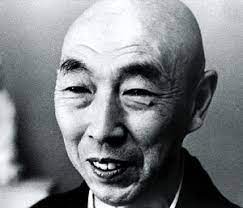
We dedicate our March sesshin to the memory of Kosho Uchiyama Roshi, the teacher of our founder, Shohaku Okumura and author of the foundational book Opening the Hand of Thought. As he is one of the main shapers of Sanshin style, we can't help but be grateful for his life and practice. He died on March 13, 1998. We will hold a brief memorial service following the usual Sunday morning zazen and dharma talk, given by Okumura Roshi himself.
5-day June sesshin (2025)
June 3 - 8, 2025
The five-day June sesshin is part of our annual three-month practice period, or ango. During the ango, a shuso, or head novice, serves as an apprentice teacher in order to develop leadership skills as Soto Zen clergy. While Hoko will lead the sesshin, the shuso will also serve as a model of practice in the zendo for the community. Learn more about our 2024 ango here.

